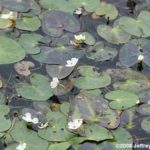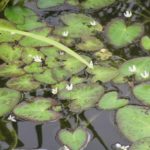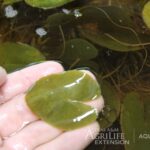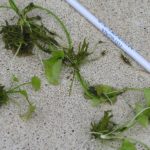Nymphoides spp.
Illustration courtesy of University of Florida/IFAS Center for Aquatic and Invasive Plants. Used with permission.
What is Floating Heart?
Physical Characteristics
Leaves:
- Floating
- Alternate
- Long leaf stalks
Flowers:
- White or bright yellow in color
Stem:
- Stout
Roots:
- Short
- Clustered
Where Does it Grow?
USDA, NRCS. The PLANTS Database (http://plants.usda.gov). National Plant Data Team, Greensboro, NC 27401-4901 USA.
Floating heart can be found in quiet flowing rivers, streams and lakes.
Pros and Cons of Floating Heart
Floating heart has no known direct food value to wildlife. Submerged portions of all aquatic plants provide habitats for many micro and macro invertebrates. These invertebrates in turn are used as food by fish and other wildlife species (e.g. amphibians, reptiles, ducks, etc.). After aquatic plants die, their decomposition by bacteria and fungi provides food (called “detritus”) for many aquatic invertebrates.
What Type of Floating Heart Do I Have?
There are four common species of floating heart in North America. Click on the buttons to learn more about each species.







